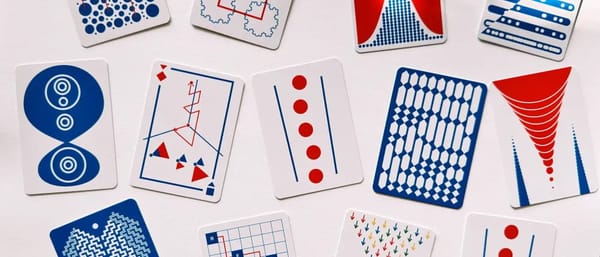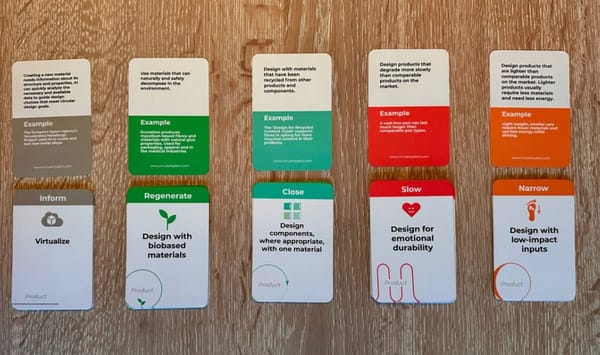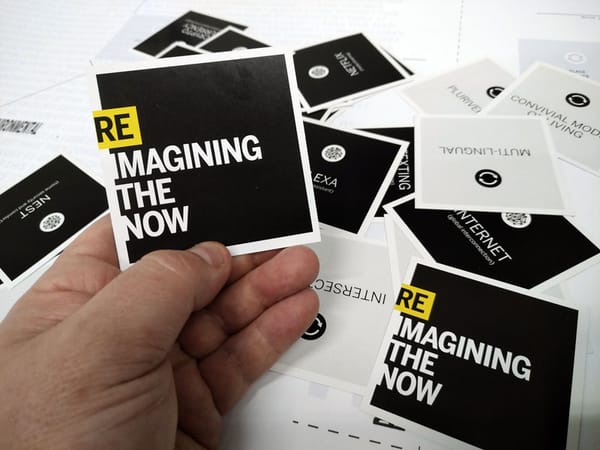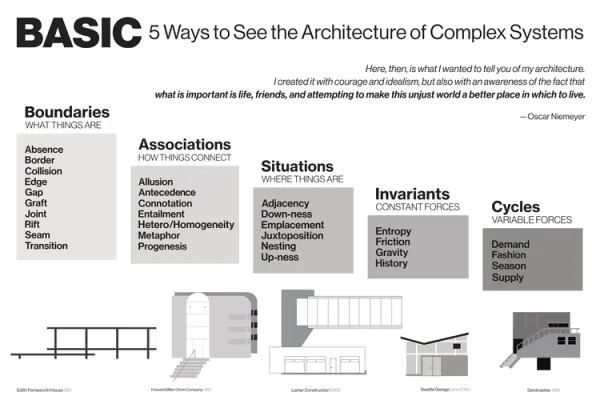№ 103 | ‘At What Cost?’, The Tarot Cards of Tech, Two Visuals to Improve Your Next Talk, The Mind’s Pendulum, Habits of a Systems Thinker Cards, Afrofuturism and the “future past”, and Four Ways Humans Relate to Technology
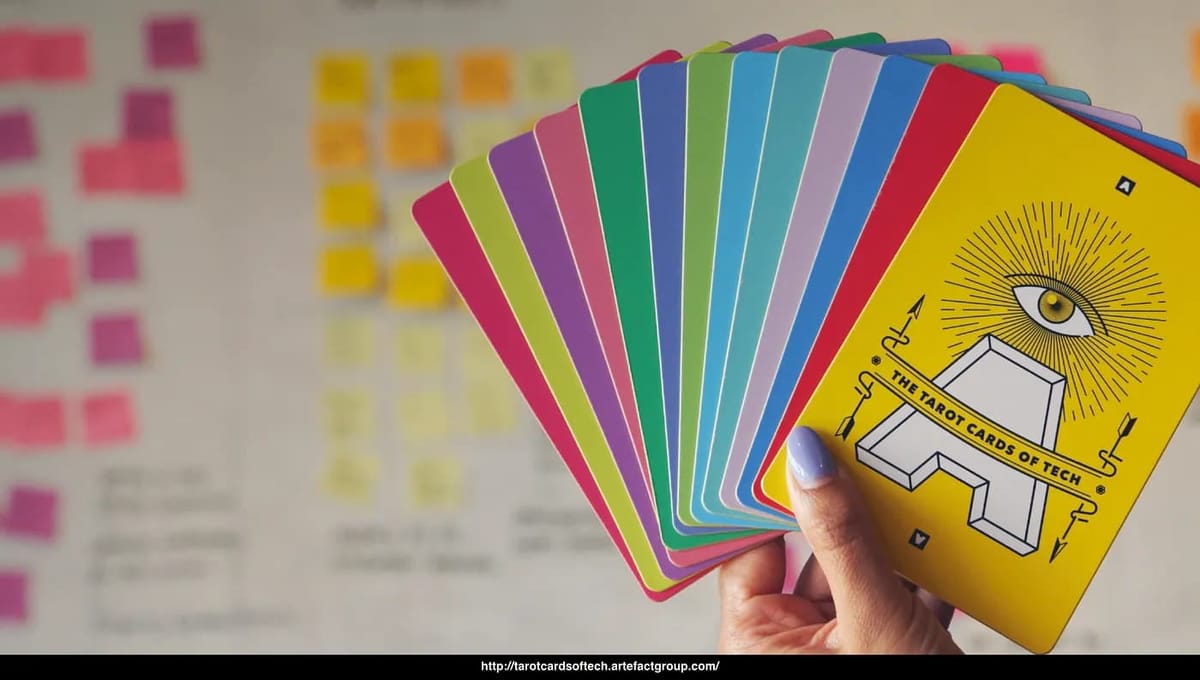
Another dose of playful things to think with. Perhaps a little less playful… And a wee bit more somber and cerebral… But, all good things to think about!
‘At What Cost?’
Here’s your perennial reminder to think about the unintended consequences of the things we design, build, and use. “From ‘how might we’ to ‘at what cost’” asks us to think, as the title suggests, about the costs of the things we create, especially when these things may bring harm to people, communities, and the planet. To support this message, here’s a nice little framework to balance our "How might we…" musings.
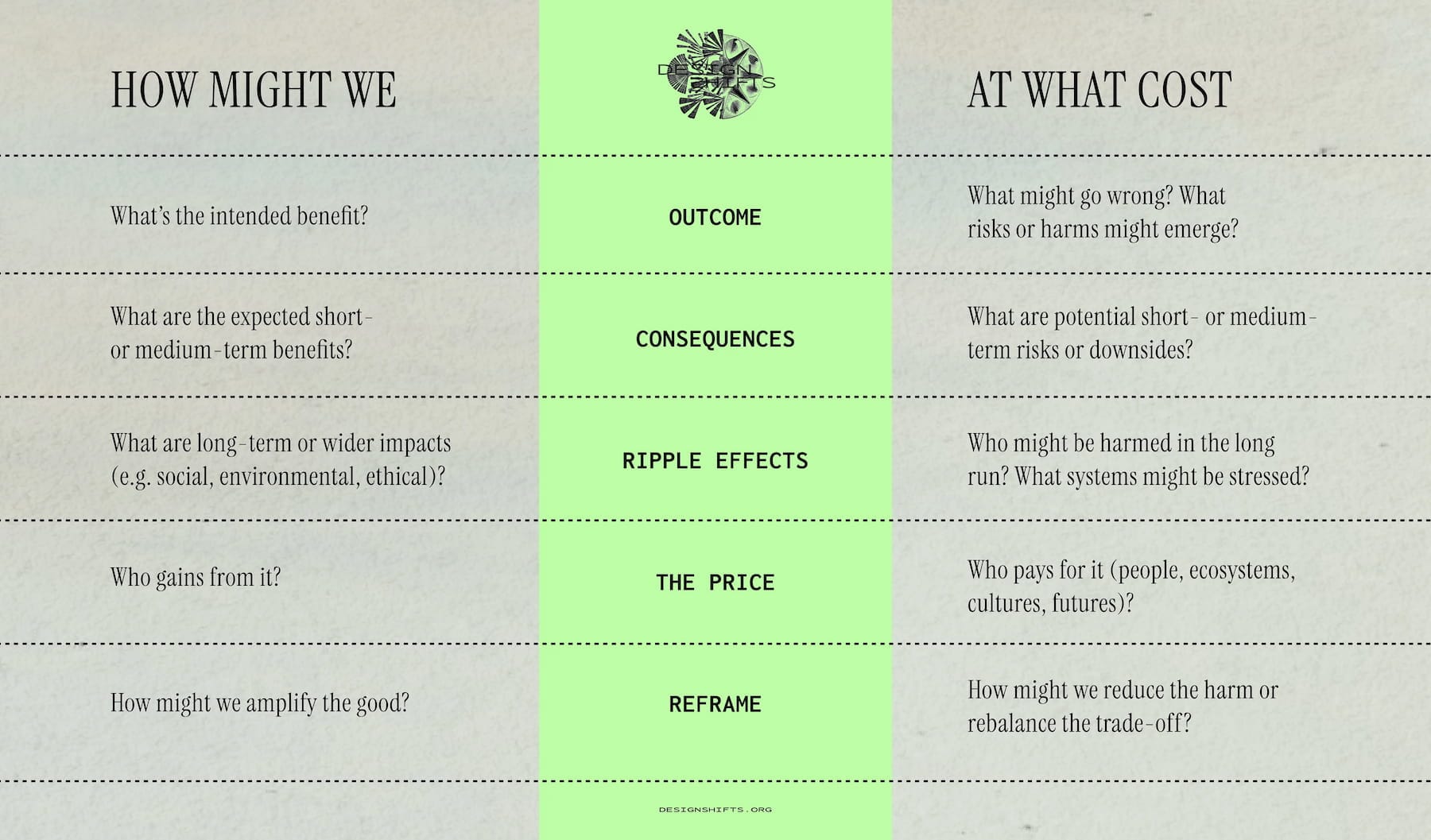
I especially like that this post holds the tension between possibility and responsibility:
“Good design is a dance between curiosity AND criticality…”
Throughout the years of trying to innovate in a responsible way, I’ve also come to realize something critical and that is as often as we ask “how might we” we also have to ask “at what cost.” Design can heal but it can also harm. These complementary questions create a necessary tension that leads to more responsible outcomes.
While we’re on this topic, I’d regret it if I didn’t mention The Tarot Cards Of Tech. Published by Artefact Group back in… 2017(?), this is a small (only 12 cards) but mighty deck of provocations, each asking us to consider different types of unintended consequences.
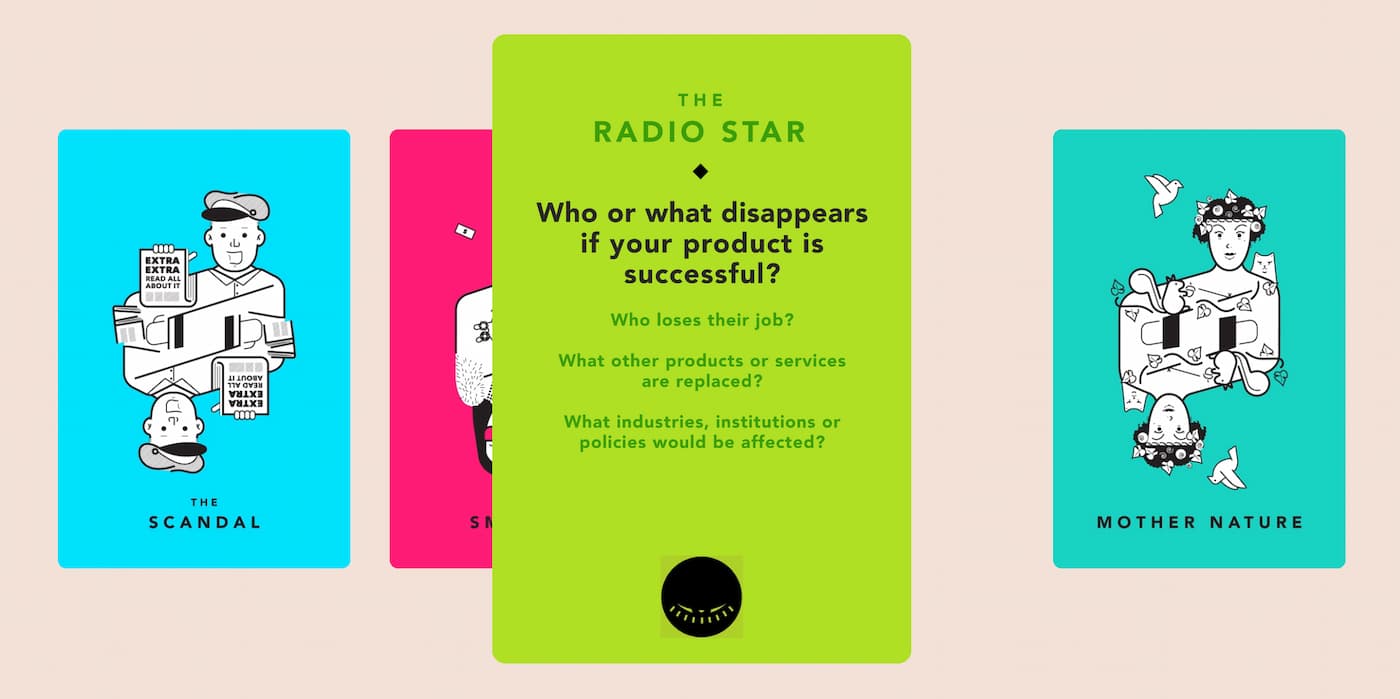
Two visuals to improve your next talk
I collect lots of posts on public speaking and ways to organize talks, but these rarely make it to this newsletter. Why not? Most of these fall in the category of “laundry list” information. Good fodder for a card deck, but they need more organization. Which leads me to… Not one, but two visual representations of what might constitute a good talk.
This first of these, a simple Bulls-eye representation of the “4 Layers of Public Speaking,” feels like solid information, with a top and bottom half to contrast good speaking with bad speaking.
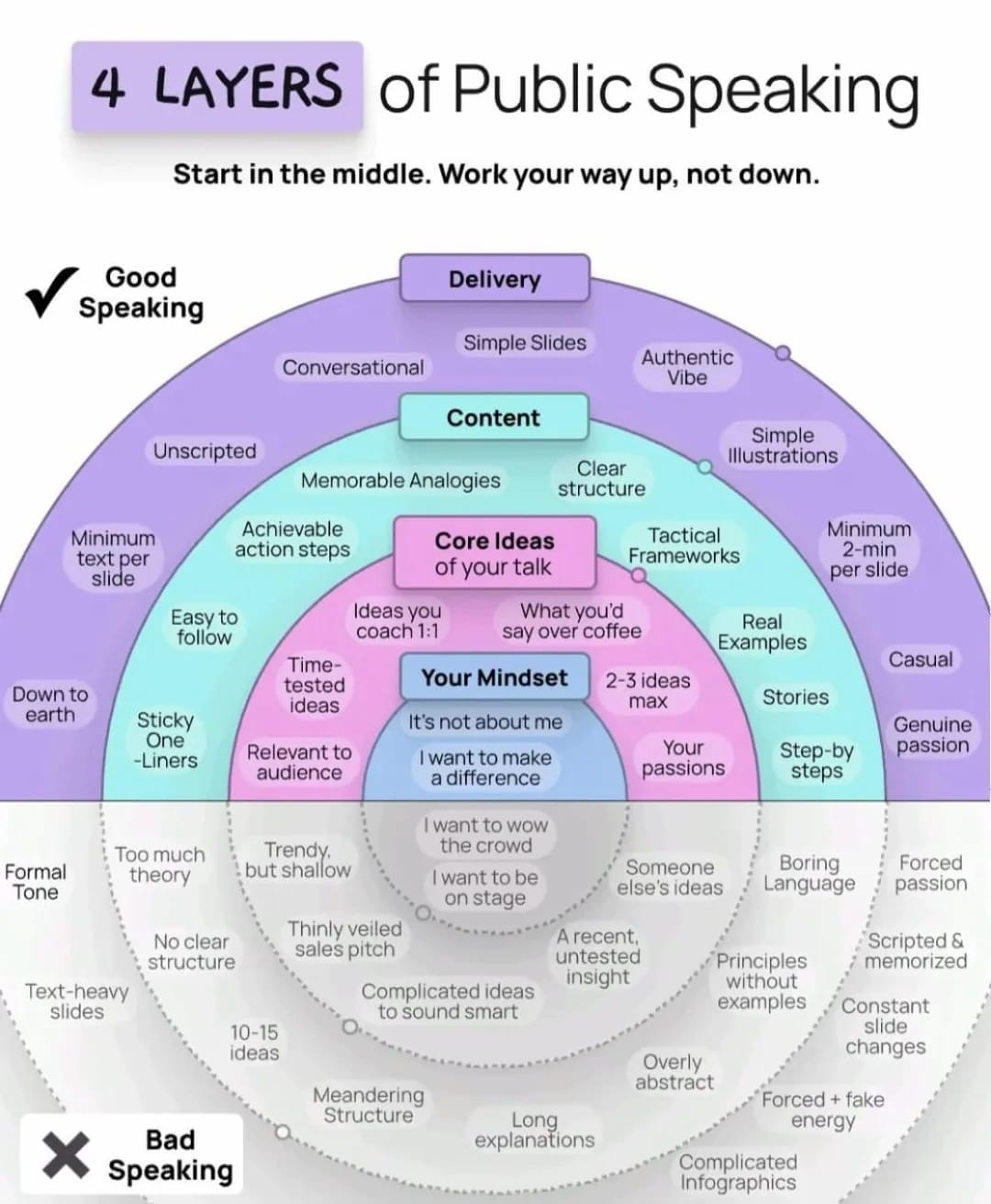
The second one… just look at this animation! 🤩 While “How to write a Conference Talk” feels a wee bit more like a formula than a framework, there are some good tips in here.
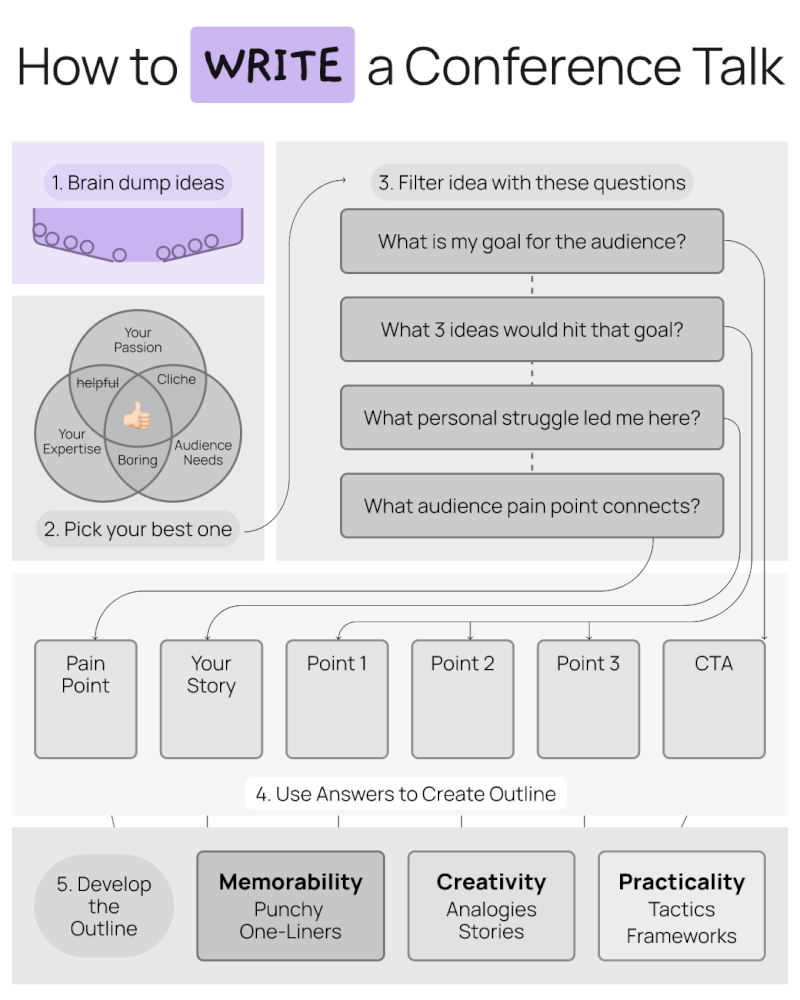
The Mind’s Pendulum
Psst. Can I confess something? What intrigues me MOST about this LinkedIn post on The Mind’s Pendulum isn’t the content, it’s the visual representation; using the metaphor of pendulum—to represent living in the present, past, or future—is something I might try out with other content.
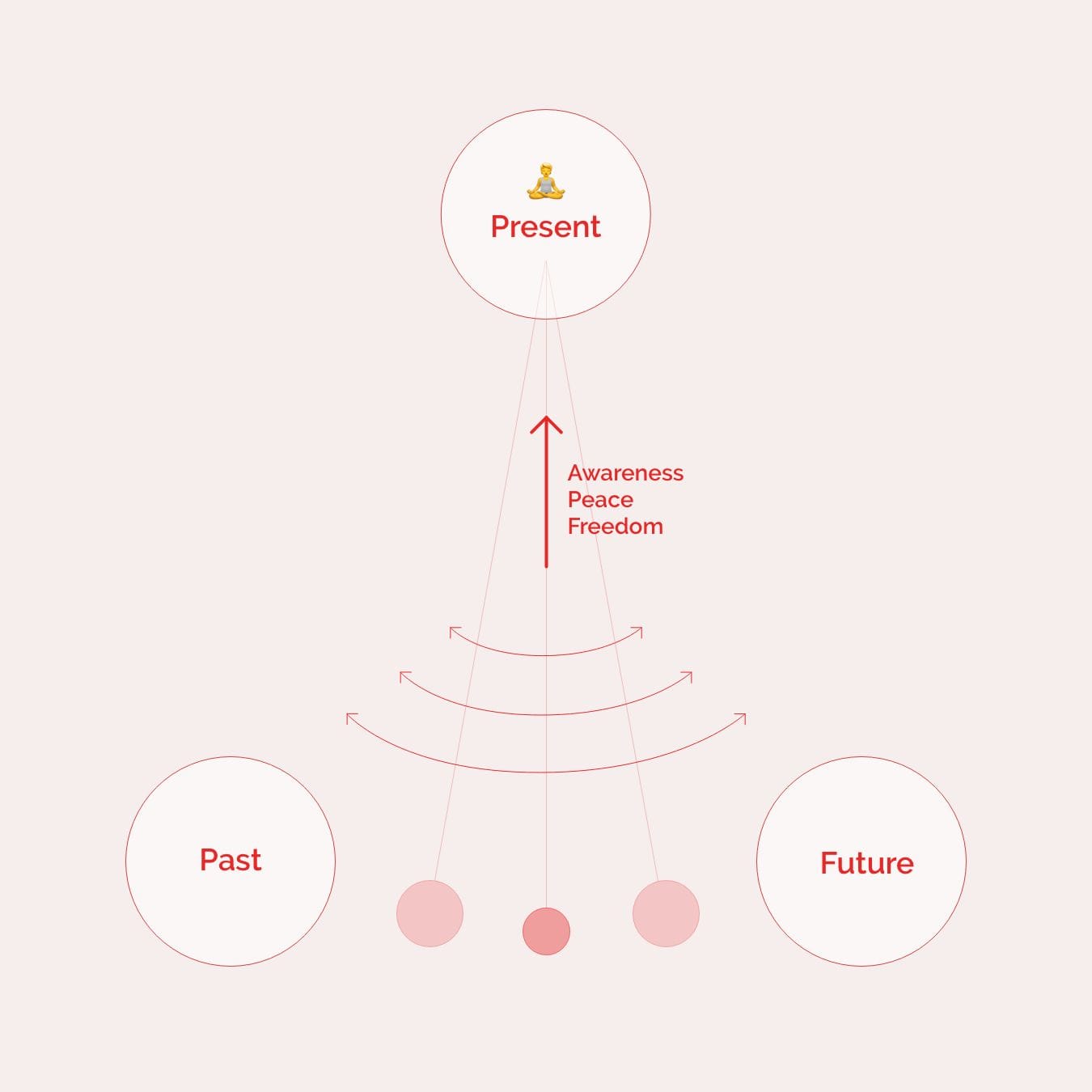
That confession aside, the content did give me pause, as I thought about where I spend most of my time… And whether I agree with some of the assertions made in the post. Yes to living more in the present (the main point). And yes to learning from the past. But, what about those who dwell on the past, consumed by regret or anger? And where is the hope of imagined futures, futures that keep us going? For this content, I might have something more like an x or 2x2 rotated 45 degrees—where “the present” is in the center, and then you have both healthy and unhealthy ways to view the past and the future.
Habits of a Systems Thinker cards
Systems Thinking! Cards! All online!
I had to check my copy of the book The Habit-Forming Guide to Becoming a Systems Thinker, as I thought these Habits of a Systems Thinker cards looked familiar, like the 14 cards that come bundled in the back of that book (and yes, they are the same cards—only with slightly different illustrations). I like how these cards focus on things systems thinkers can do or practice.

Why Afrofuturism isn’t just about the future
I’ve not read enough Afrofuturism (or africanfuturism — thank you Nnedi Okorafor for this distinction!) to comment on the genre. But, this short “carousel” post on Why Afrofuturism Isn’t Just About the Future [LI] definitely flipped a switch for me, helping me to see how much of this “sci-fi” is rooted in history and how “every resistance movement contains blueprints for alternative futures.” 😍
Future past means seeing classic Black stories as speculative:
• Solomon Northup's kidnapping becomes an alien abduction narrative.
• Harriet Jacobs's seven years hidden in an attic becomes a pocket dimension story.
• Frederick Douglass, through literacy, becomes a cyborg figure who transforms his body through technology.
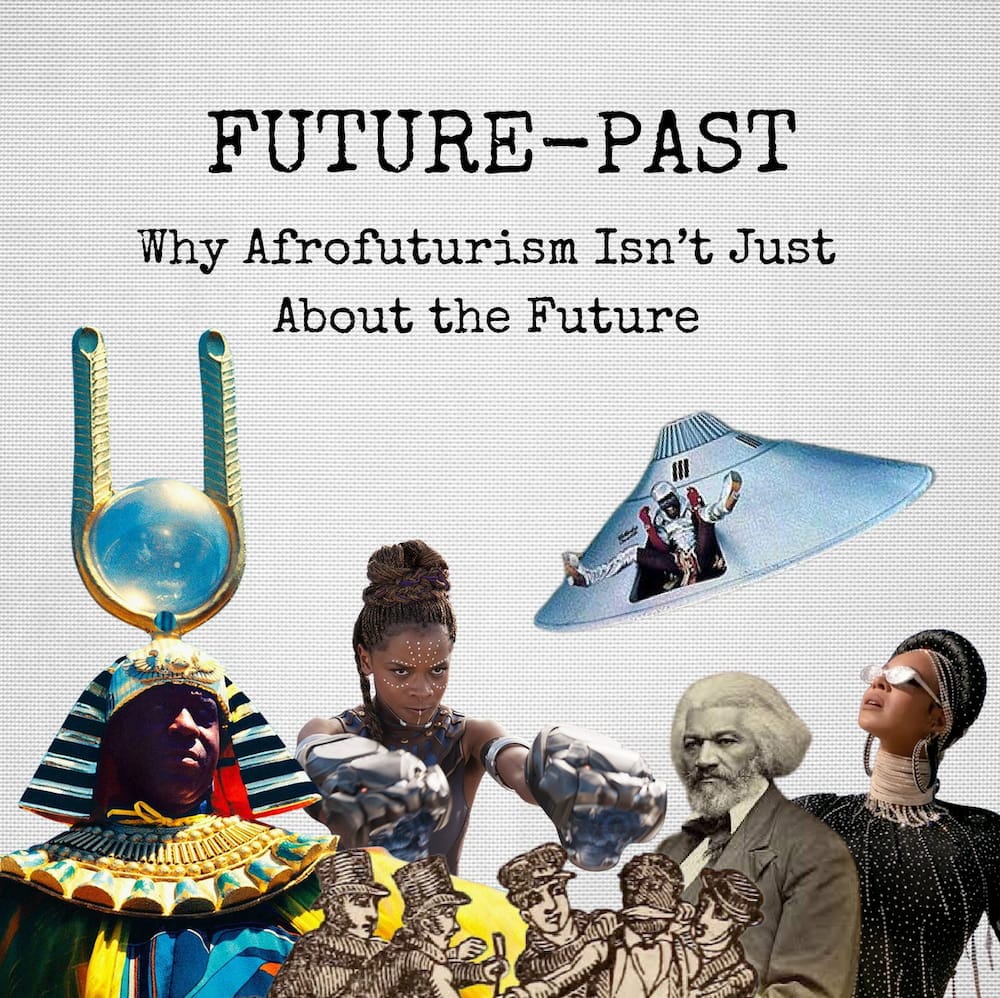
Four ways humans relate to technology
Here’s a chance to level up our language! This short post on “Beyond the Extended Mind” presents “four ways humans relate to technology, each increasing in relational complexity.” Spoiler/teaser: The four ways are: (1) Prosthesis, (2) Symbiosis, (3) Distributed Cognition, and (4) Cognitive Assemblages. Time for me to work these into a visual, for better understanding.
Random Stuff!
- I kind of love this challenge to design the WORST volume control?! 🤣
- Whoa. America by Design Fail pulls no punches shredding the “design” of the new America by Design web site (and reminding us all that there were some really great design groups that got cut by DOGE).


